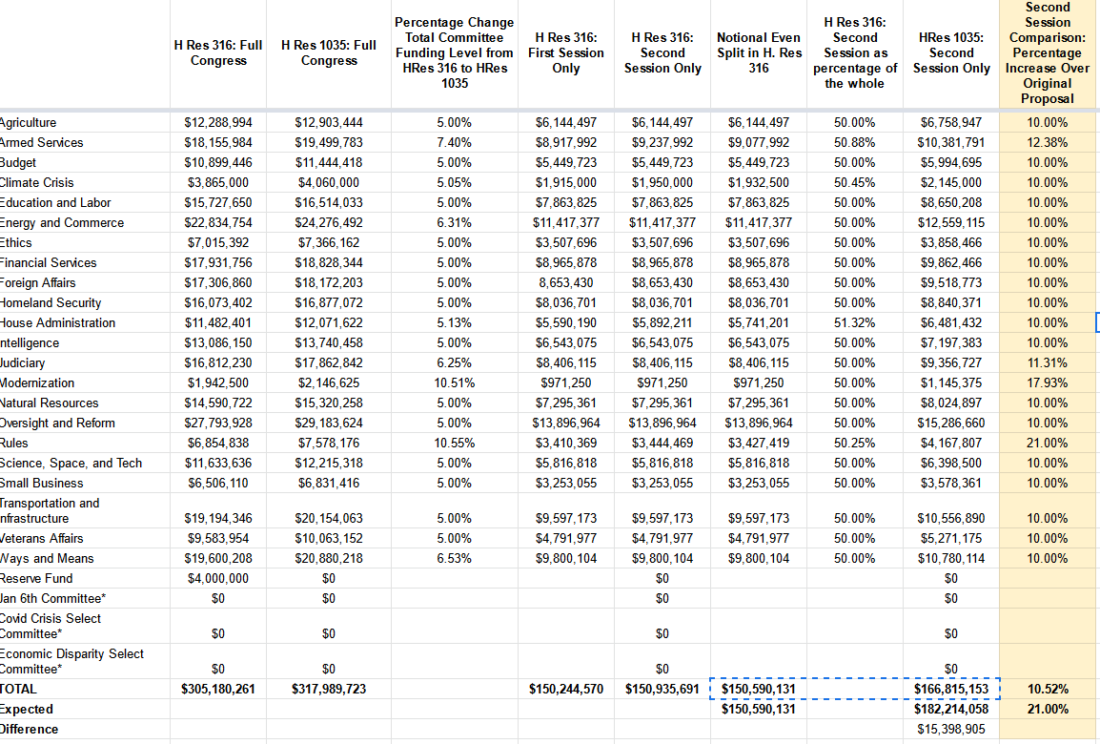On Wednesday, June 22, 2022, the full House Appropriations Committee favorably (32-26) reported the FY 2023 Legislative Branch Subcommittee Bill (with amendments) and committee report. They are packed with good government reforms and significant investments in Congress’s capacity to legislate, conduct oversight, serve constituents, and more.
We and our civil society colleagues made recommendations of dozens of items to include — see our FY 2023 Appropriations requests, FY 2023 appropriations testimony, and report on updating House Rules for the 117th Congress — a number of which made it into the bill and report. We are deeply appreciative of Chair Ryan, Ranking Member Herrera Beutler, and members of the committee for their consideration of our requests. For resources on prior Legislative Branch Appropriations bills, go here.
We already have published summaries of what the House included in its FY 2023 Leg Branch Approps bill text, and you can see the changes in the appropriations line items here.
As the Senate considers what to include in its Legislative Branch Subcommittee bill and report, we highlight a few provisions in the House bill that the Senate should consider for itself. They include:
- Creation of new offices to enhance diversity and inclusion, specifically the creation of the House Intern Resource Office and the Office of Translation Services.
- Strong investments in staff benefits and care, specifically child care, emergency care (which now include custodial and contract workers), and student loan repayments.
- Heightened funding for technology and modernization projects, specifically the congressional staff directory, collaborative legislative drafting tools, standardization of legislative documents, and separate technology modernization fund.
Although we were unable to include everything below, you can find a complete list of FY 2023 Legislative Branch Appropriations report items in a comprehensive spreadsheet. The following are some of the highlights.
Appropriations Spreadsheet
To help keep track of all items requested by the Legislative Branch Subcommittee, we built a public spreadsheet that maintains a catalog of items, broken down by title, the entity responsible, the timeline for completion, and the due date. See the spreadsheet here and below:
Continue reading “Demand Progress Proposals Included in FY 2023 Legislative Branch Appropriations Bills and Report”
